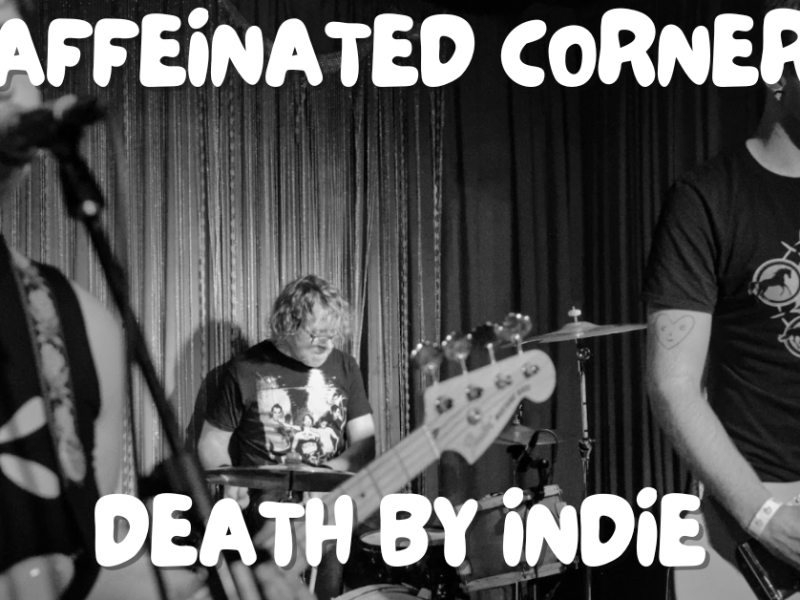There are two things that I have a profound affection for: music and literature. Hozier skillfully and elegantly blends these two in his latest album, Unreal Unearth. Drawing inspiration from Dante’s Inferno, Hozier melds Dante’s odyssey through the Nine Circles of Hell with motifs of affection, heartbreak, and finding beauty in both darkness and light. The result? A 16-track masterpiece of an album, easily one of the best releases this year.
If you’re unfamiliar with Inferno, it is the first part of the epic poem, Divine Comedy, by Dante Alighieri. It portrays the poet’s journey through the Nine Circles of Hell, guided by the ancient Roman poet Virgil. Each circle represents a progressively worse sin and punishment, leading deeper into damnation. The work explores themes of sin, redemption, divine justice, and the human condition, offering an allegorical depiction of the afterlife according to Christian beliefs. Hozier specifically structures his album around this journey, so I wanted to take a deeper dive and point out Hozier’s journey as it correlates to Inferno.
De Selby (Part 1) & de Selby (Part 2)
“De Selby (Part 1)” and “De Selby (Part 2)” open up Unreal Unearth, symbolizing the descent into the underworld. Sonically, “De Selby (Part 1)” is mysterious, yet eerily soothing. Hozier’s voice is almost like a solo invitation into descent as he sings about emptiness and loneliness. The outro, sung in Gaelic, introduces the idea of metamorphosis and the meshing of light and darkness.
“De Selby (Part 2),” despite its infectious funk-rock sound, further explores this idea of metamorphosis and darkness in the context of connection with yourself and others. In this song, he specifically discusses getting lost in the darkness with someone he loves. This experience reaches a point where he loses his sense of self, time, and direction. “De Selby (Part 1)” and “De Selby (Part 2)” are essentially the prequel to the Nine Circle of Hell he is about to find himself traveling through.
first time
With a voice like honey, Hozier presents the First Circle of Hell in the next track, “First Time.” This song represents Limbo, where souls are not punished directly, but instead are condemned to suffer harm through living in desire. They are condemned to eternal darkness and are unable to achieve the light of God. This idea is perfectly represented in “First Time” as Hozier sings, “This life lived mostly underground / Unknowin’ either sight nor sound / ‘Til reaching up for sunlight just to be ripped out by the stem.” Though this song presents itself somewhat as a love song, there are heavy themes of the desire for survival and reincarnation present in this beautiful song.
Francesca
“Francecsa” serves as the representation of the Second Circle of Hell, Lust. In this circle, souls are subjected to an eternal storm where they are all constantly tossed around without reason, just as the lustful act without reason. This song explores themes of commitment and love while drawing parallels to the love story of one of the souls trapped in this circle, Francesca de Rimmi. While her love affair with Paolo Malatesta was a lustful sin, Hozier redefines their love story and humanizes them. He allows them to be an unshakable force against this storm, rather than being tortured by it as he sings, “Now that it’s done / There’s not one thing I would change / My life was a storm since I was born / How could I fear any hurricane?” One of my favorite lines from the entire album comes from this song, where Hozier expresses how this love flourishes in its exile from Heaven when he repeats “I would not change it each time / Heaven is not fit to house a love like you and I.”
eat your young
“Eat Your Young” is simply a song about gluttony, which is fitting that Gluttony is the third circle of Hell in Inferno. There are several forms of gluttony present throughout this song, with the traditional connotation of food intertwined with sexual undertones. However, Hozier makes several statements about capitalistic and corporate greed. Specifically, “Skinning’ the children for a war drum / Puttin’ food on the table, selling’ bombs and guns / It’s quicker and easier to eat your young.” Here, Hozier is vocalizing that the army enlisting young men to practically die in war and how the same companies that regulate food are also producing weapons for war are, in fact, quick ways to kill the youth.
damage gets done
Hozier teamed up with the brilliant Brandie Carlile to create the lovely ballad, “Damage Gets Done.” It is a representation of the Fourth Circle of Hell, Greed. The duo touches on the subject of greed in a unique way, discussing being youthful and reckless while also exploring long-term damage that is done to our society. The two sing together in the chorus, “But I know bein’ reckless and young / Is not how the damage gets done.” Hozier and Carlile sing about how the younger generation is always blamed for the negative state of our society, when in fact, it is quite the opposite. The youth are “being blamed for a world we had no power in,” when corporate greed is one of the primary causes of the state of our society today.
who we are
“Who We Are” is a song about heartbreak, but it also parallels the Fifth Circle of Hell, Wrath. It is also a reflection on how we act out our personal traumas against other people. Much like Dante in Inferno, Hozier is learning throughout the song who we are as people and how our meaning for existence is violent and painful. This is beautifully expressed in the chorus, “So much of our lives / Is just carving through the dark / And the hardest part / Is who we are.”
all things end
“All Things End” is such a powerful song and probably my favorite song off of the album. Lyrically, tt is painfully heartbreaking, but sonically, the production value is astonishing. Hozier laments about the end of a relationship, emphasizing that nothing is ever permanent. He sings, “And all things end / All that we intend is scrawled in the sand / And slips right through our hands.” This track represents the Six Circle of Hell, which is Heresy. If the choral backing vocals weren’t symbolic enough, Hozier compares this lost relationship to giving up your faith in something you once believed in.
butchered tongue
In the Seventh Circle of Hell, Violence, “Hozier’s song “Butchered Tongue” delves into the outer ring of this particular circle. It is a place reserved for those who committed acts of violence against their neighbors. Hozier’s lyrics paint a vivid picture of the brutality inflicted upon Irish rebels by British forces during the Wexford Rebellion of 1798, where ears were severed as a gruesome form of punishment and intimidation. The song also reflects on the widespread linguistic violence that occurred, where languages were butchered and native language speakers suffered. Although Gaelic endured harsh oppression, it didn’t emerge unscathed, leaving many unable to speak it today. The poignant lines, “With no translator left to sound / A butchered tongue still singin’ here above the ground” highlight the resilience of cultural language in the face of oppression. This song becomes a powerful voice for those who have been silenced by violence, a testament to their enduring legacy.
anything but
“Anything But” is a really fun take on the Eighth Circle of Hell, Fraud. Both sonically and lyrically, this track comes across as a sweet love song featuring lines such as “If I was a stampede you wouldn’t get a kick” and “If I was a riptide I wouldn’t take you out.” These seemingly sweet lyrics, however, reveal Hozier’s desire to distance himself from this other person. When Hozier sings”If I had his job, you would live forever” the “he” Hozier references is Death. So, when looking at the parallel between the song and Inferno, “living forever” would simply be eternal torment.
unknown/nth
In the final circle of Hell, the realm of Treachery, Hozier weaves a narrative of betrayal and the profound sense of being misunderstood within a relationship. His lyrics delve into the pain of having one’s heart shattered by someone who was once trusted. He sorrowfully laments, “So I thought you were like an angel to me.” The song navigates the complexity of human nature, highlighting how someone who was once virtuous can also be mistaken for someone entirely different. The haunting refrain of “sha-la-la’s” in the chorus seems to serve as a haunting reminder, almost as if this person is taunting Hozier.
first light
“First Light” serves as the light at the end of the tunnel of this tumultuous journey. It represents the end of Dante’s journey through Hell, as well as one’s journey through darkness and seeing light again. It’s mostly about reconciliation, and Hozier seems to celebrate “the light” instead of finding it blinding. The poignant line “And I can scarce believe what I’m believing in / Could this be how every day begins?” encapsulates the sense of transformation that accompanies the conclusion of Dante’s journey, reflecting the profound lessons learned from the trials of Hell.
Unreal Unearth is an outstanding album from beginning to end. The way Hozier creates this beautiful parallel between Dante’s journey through Hell to one’s journey through love and loss as well as darkness and light is incredibly poetic. Songs on the album that I did not mention above still deserve love and acknowledgement. Hozier still found ways to tie in literature in tracks such as “I, Carrion (Icarian)” and “Son of Nyx.” I was genuinely shocked by how genius this album’s concept was, and I truly think this phenomenal album is definitely one of the best to come out this year.




